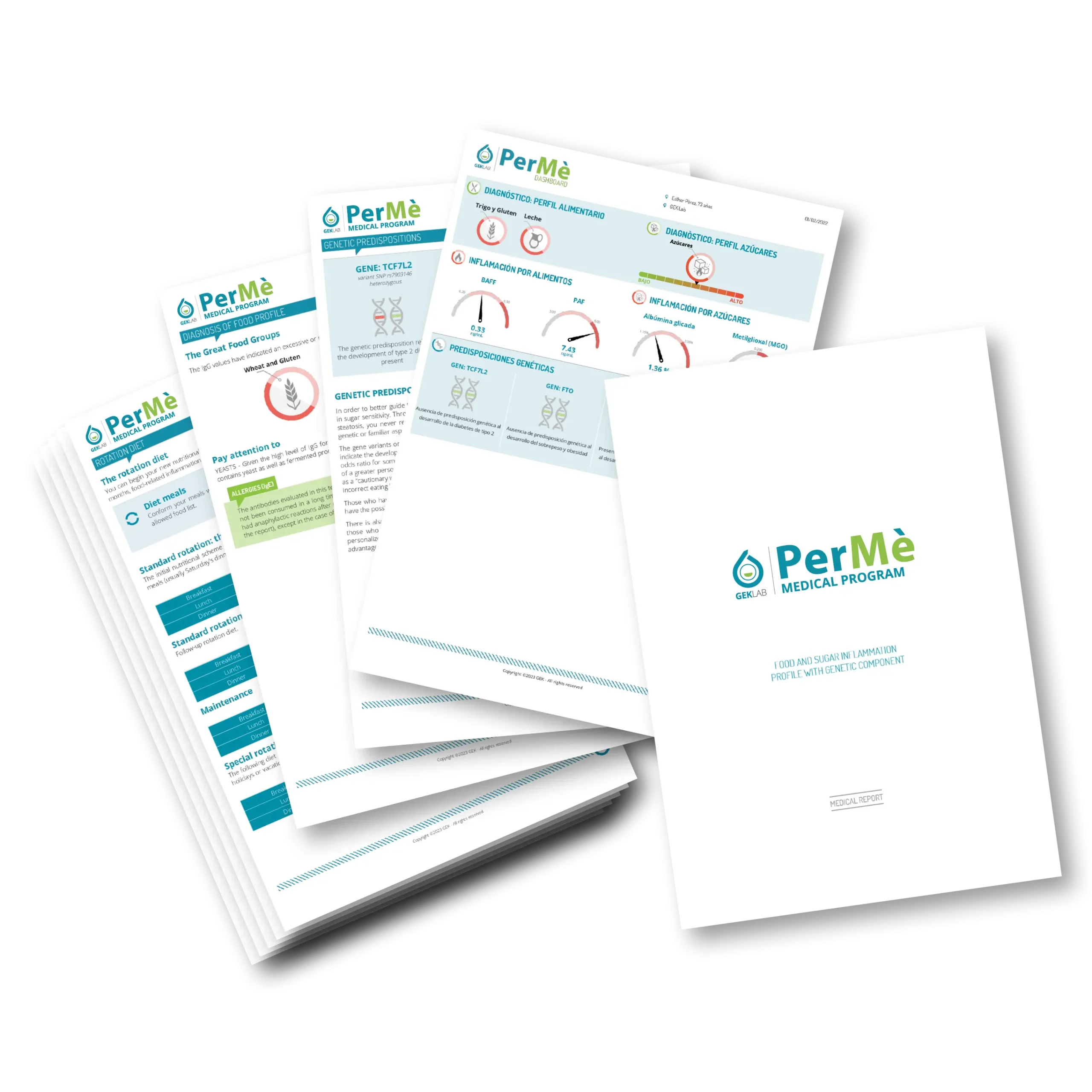
During menopause, significant hormonal changes occur. The decrease in estrogen levels contributes to a slower basal metabolism, which can lead to weight gain and a redistribution of body fat, with more accumulation in the abdominal region.
This change in body composition is associated with an increased risk of developing insulin resistance and type 2 diabetes.
As the years go by, muscle mass tends to decrease while fat mass increases. Although this process is physiological, it contributes to a slower metabolism since muscle cells consume more energy than fat cells.
With the decrease in estrogen levels, the risk of other conditions also increases, such as cardiovascular diseases, metabolic syndrome (a cluster of conditions including hypertension, hyperglycemia, and dyslipidemia), and osteoporosis.
Diet, inflammation, and hormonal function are interconnected on multiple levels. Firstly, an inflamed body is in a state of “alert,” adapting to an abnormal situation by conserving certain functions, including hormone production and energy expenditure.
Exercise to counteract menopause symptoms and effects
Regular physical activity is crucial in counteracting the effects of menopause. Aerobic exercises such as walking, running, or swimming help maintain body weight, improve cardiovascular health, and reduce the risk of diabetes, in addition to significantly affecting mood.
However, the effectiveness of aerobic exercise depends on the amount of muscle mass present: if a significant portion of lost muscle mass is not recovered, the benefits of aerobic exercise will be limited. Therefore, integrating aerobic activity with strength or resistance training helps stimulate muscle formation and prevent osteoporosis.
Proper nutrition
Physical exercise is not very effective if it is not accompanied by proper nutrition.
It is essential to ensure an adequate protein intake distributed throughout the day. Guidelines recommend a daily protein consumption of 1 gram per kilogram of body weight (for example, 100 grams of meat or fish contain about 22 grams of protein).
A plentiful, complete, and balanced breakfast, including proteins, fruits, and whole carbohydrates, stimulates metabolism and helps preserve lean body mass.
It is equally important to balance meals with whole grains and vegetables, accompanied by protein sources, to ensure good postprandial glycemic control and a correct intake of nutrients.
Finally, a light dinner with a reduced carbohydrate content compared to the rest of the day helps limit fat accumulation.
Effects of inflammation on menopause
Nutrition, inflammation, and hormonal function are interconnected at various levels.
To produce hormones, our bodies require building blocks, primarily proteins and lipid components, which are mainly obtained from food. However, the efficiency of this production is strongly correlated with the inflammatory state.
Firstly, an inflamed organism is in a state of “alert”, adapting to an abnormal situation by conserving certain functions, including hormone production and energy consumption.
Secondly, low-grade inflammation, especially at the intestinal level, can render nutrient absorption inefficient and inadequate for the body’s needs. In cases of scarcity in the arrival of minerals and vitamins in the body, muscles and bones become reservoirs of proteins and minerals to draw from: thus, an inflamed organism will reduce muscle mass and weaken bones, exacerbating similar effects due to reduced estrogen production.
Sugar-induced inflammation also plays a role in these processes. Glycation, a phenomenon where proteins and other substances beneficial to the body are modified by excessive sugar presence, affects hormones, altering their normal function. When estrogen production decreases for physiological reasons, the fact that a portion of these hormones is glycated – and therefore functionally impaired – significantly impacts, resulting in worsening typical menopausal symptoms.
Finally, BAFF, a molecule produced by the immune system that exhibits elevated levels in the presence of chronic inflammation, has a significant impact, promoting insulin resistance (and thus abdominal fat accumulation) and activating processes that cause bone demineralization.
What to do
Every organism reacts differently to the transition of menopause, which is why it’s important to measure one’s personal level of sugar-induced inflammation (causing glycation) or food-induced inflammation (promoting BAFF production) by undergoing a PerMè Medical Program.
Clinical practice shows that by implementing a personalized rotation diet based on report results and consequently lowering inflammation levels, menopausal symptoms are drastically reduced, along with the risks of other related diseases and conditions.
This also applies to the infamous hot flashes, which are related to the dilation of blood vessels, and their discomfort is less pronounced with low inflammation levels (not surprisingly, the most bothersome manifestations typically occur during those nighttime hours when our natural anti-inflammatory levels reach their lowest point in their daily cycle).
Menopause is a physiological and natural transition, but with the right approach, it’s possible to effectively manage the changes and associated symptoms. A mix of balanced nutrition, regular physical activity, and inflammation level management can significantly improve the quality of life for every woman during and after menopause, promoting long-term well-being and health.
By the Scientific Editorial Team at GEK Lab
No post found!


